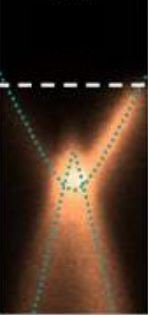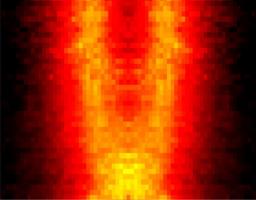Apr 28, 2020
Black phosphorus (BP) is a stack of monoatomic layers of phosphorus, bound together by Van der Waals forces. This 2d material is today attracting a great interest due to its widely tunable band gap, depending on the thickness of the material, the very high mobility of its carriers, for its application in field effect transistors (FETs), and the possible emergence of topologically protected states.
Mar 01, 2017
Femto-ARPES observation of the dynamic closure of the superconducting gap in high Tc supraconductors
The discovery of superconductivity is more than 100 years old, and the BCS theory, describing the phenomenon in its conventional version, is now 60. Today, the mechanism at the heart of the "high temperature" superconductivity (non BCS), discovered 30 years ago, remains to be identified.
Nov 23, 2011
K. Katsuyoshi, D. L'Hôte, S. Nakamae, M. Konczykowski, V. Mosser
Le théorème de fluctuation-dissipation, reliant l'intensité des fluctuations d'une observable à la réponse à une sollicitation, est un principe vérifié pour tous les systèmes à l'équilibre thermodynamique.
Nov 16, 2009
- J. Kermorvant, Laboratoire des Solides Irradiés & Unité Mixte CNRS-Thalès (Palaiseau)- C.J. van der Beek, Laboratoire des Solides Irradiés, Ecole Polytechnique- Collaboration J. Briatico, B. Marcilhac, J.C Mage, Unité Mixte CNRS-Thalès (Palaiseau), ANR Blanc grant 07-1-193024 "SURF"
The use of high temperature superconductors remains a critical challenge.
Nov 09, 2009
Emmanuel Betranhandy, Nathalie Vast and Jelena Sjakste
The mechanical properties of boron carbide at high pressure, explained from first principles.
By theoretical methods based on the density functional theory (DFT and DFPT) [1] [2], the physical properties of boron carbide have been studied for different carbon concentrations and versus temperature and pressure. A type of defect is identified, whose appearance at high pressure and high temperature, can explain the poor mechanical strength upon impact of the material .
Apr 09, 2008
L. Liszkay1, C. Corbel1, P. Perez1, P. Desgardin2, M.-F. Barthe2, T. Ohdaira3, R. Suzuki3, P. Crivelli4, U. Gendotti4, A. Rubbia4, M. Etienne5, and A.
Feb 16, 2008
At a time when we question the fossil fuel reserves of our planet and the consequences of the greenhouse effect on global warming, hydrogen is seen as the future energy vector for transportation. Research within CEA cover all stages of this chain: production, storage, transport, distribution and use. In that field, hydrogen produced from primary energy, solar, nuclear, wind, chemical ...
















